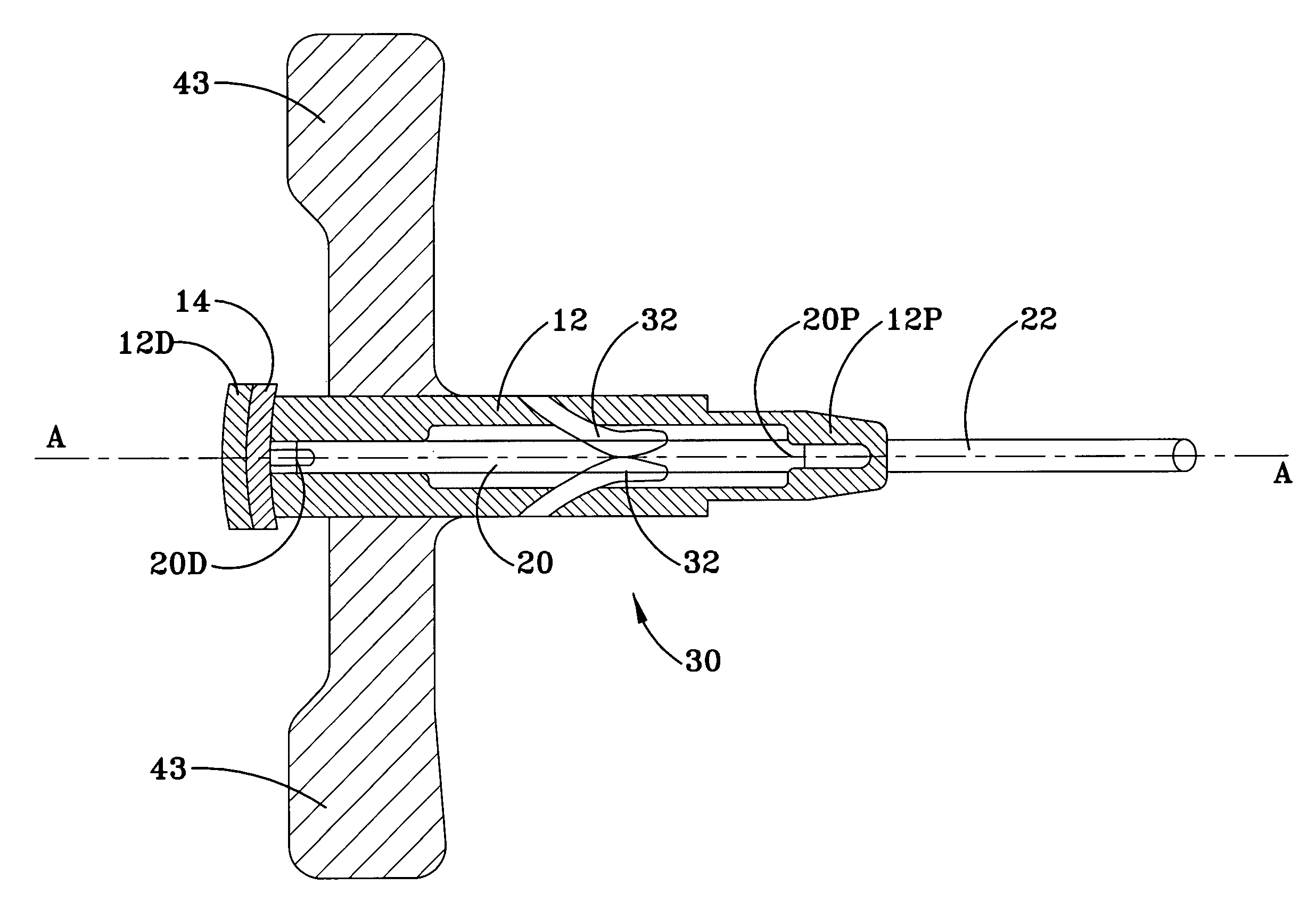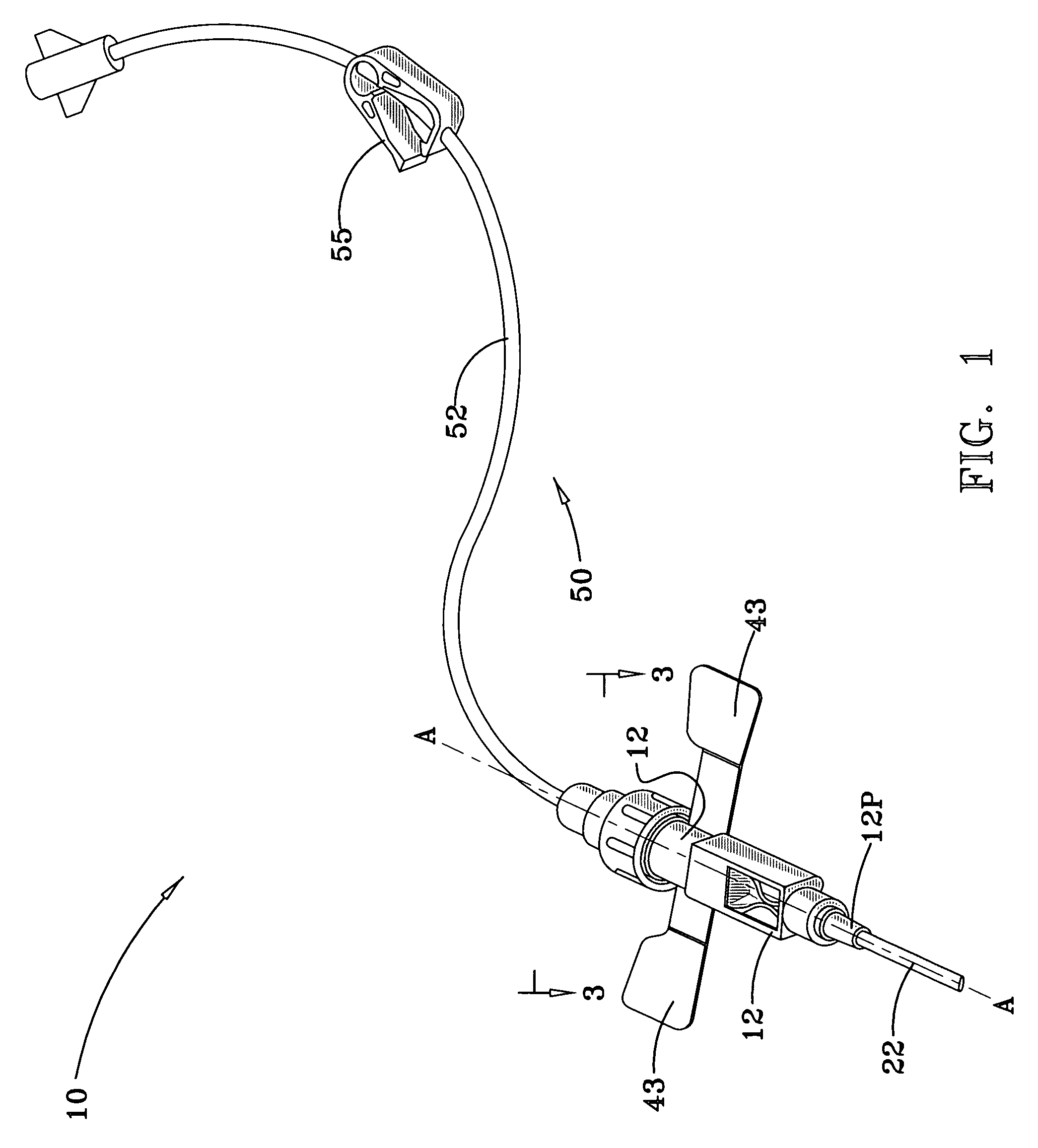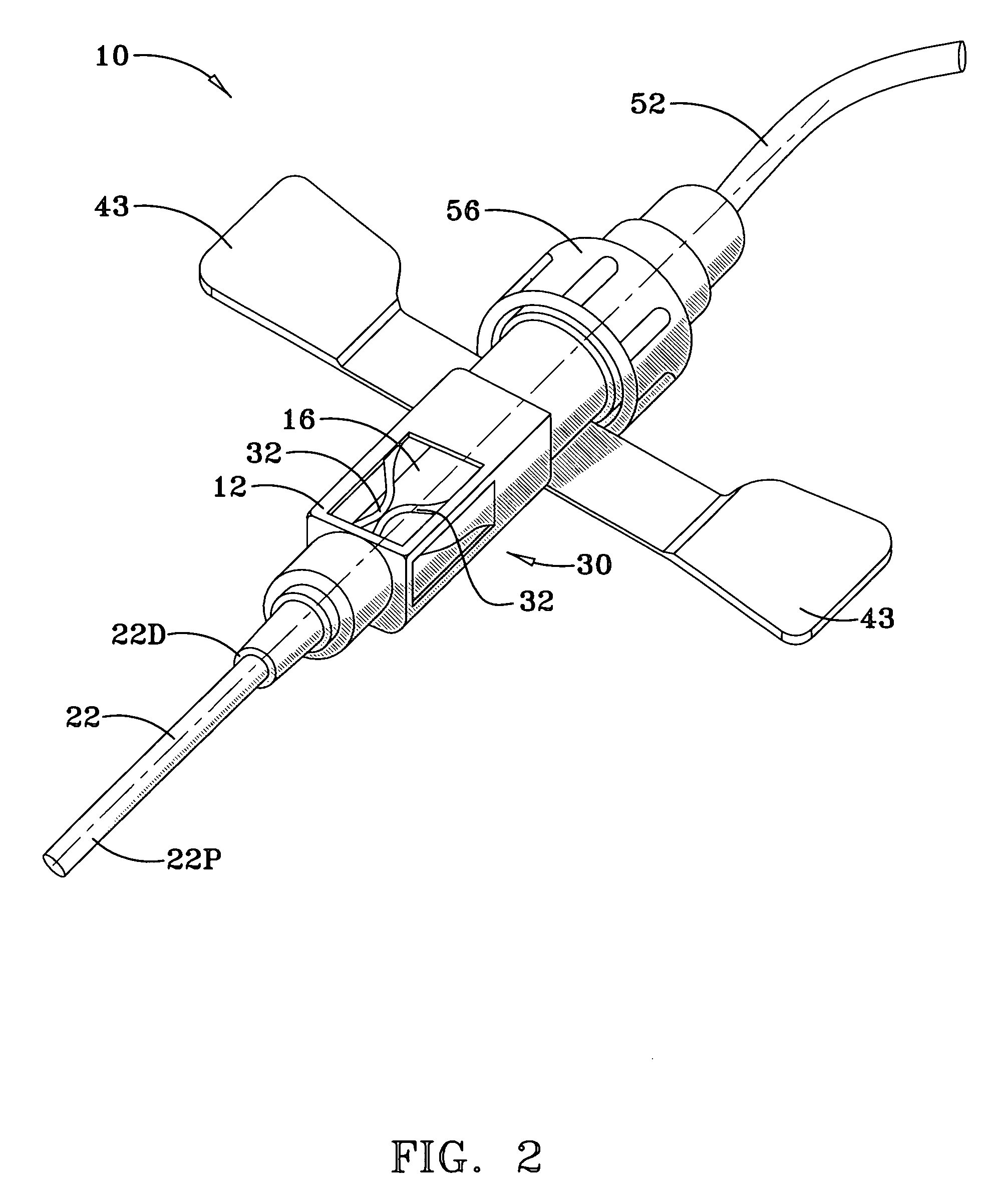Hemodialysis catheter assembly
a technology of hemodialysis and catheter, which is applied in the field of medical devices, can solve the problems of large vein distension and growth, high speed of blood rushing out of the open end of the catheter, and inability to substitute, so as to prevent blood flow through the tubing
- Summary
- Abstract
- Description
- Claims
- Application Information
AI Technical Summary
Benefits of technology
Problems solved by technology
Method used
Image
Examples
Embodiment Construction
[0044]A first embodiment of the present invention will be described hereinafter with respect to the drawings. Throughout the description of this first embodiment, as well as of the other embodiments of the invention discussed below, the term “proximal” when applied to some component or aspect of the invention should be understood to mean that the component or aspect of the invention is relatively near to a patient's hemodialysis access site when the invention is in use, and the term “distal” should be understood to mean it is relatively remote from said site. FIG. 1 depicts a hemodialysis catheter assembly according to the first embodiment of the invention, denoted generally by the numeral 10, its sterile packaging (not shown) having been removed, and ready for use in hemodialysis. With further reference to FIGS. 2-9, it may be seen that the assembly 10 includes a housing 12 that extends along a longitudinal axis A-A from an open, proximal end 12P to an opposite, open, distal end 12...
PUM
 Login to View More
Login to View More Abstract
Description
Claims
Application Information
 Login to View More
Login to View More - R&D
- Intellectual Property
- Life Sciences
- Materials
- Tech Scout
- Unparalleled Data Quality
- Higher Quality Content
- 60% Fewer Hallucinations
Browse by: Latest US Patents, China's latest patents, Technical Efficacy Thesaurus, Application Domain, Technology Topic, Popular Technical Reports.
© 2025 PatSnap. All rights reserved.Legal|Privacy policy|Modern Slavery Act Transparency Statement|Sitemap|About US| Contact US: help@patsnap.com



